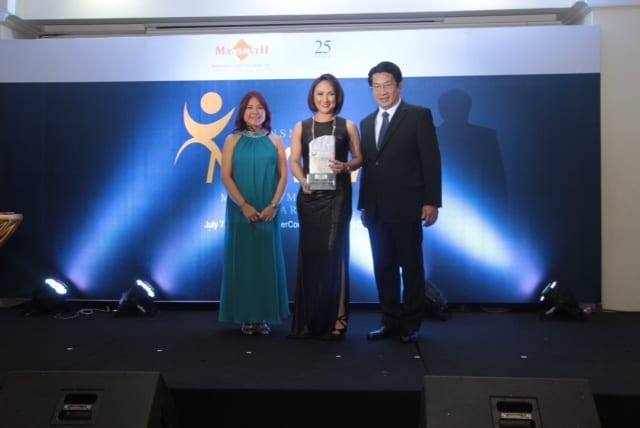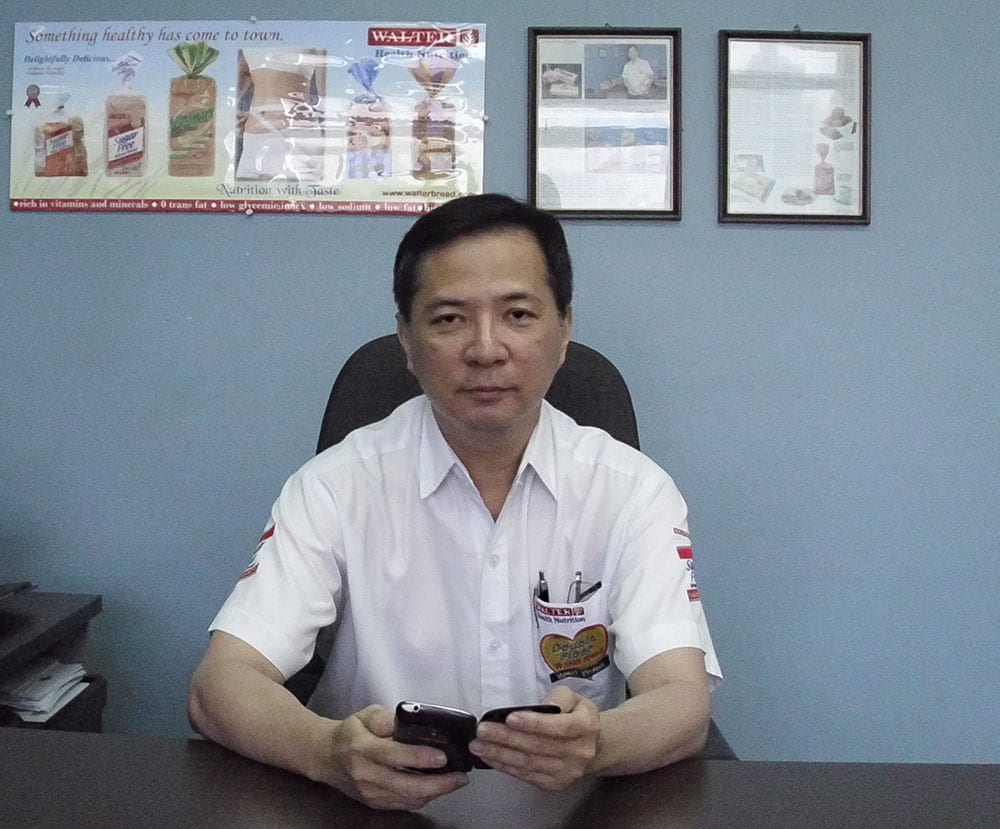
Q1: Congratulations on being part of the first batch of recipients of the Mansmith Market Masters Awards, the first and only recognition for senior executives based on outstanding mentoring of young marketers as brand builders. What is your people development philosophy?
A: From my perspective, succeeding in developing people requires 3 elements – a compelling sense of purpose, an aligned understanding of roles, and creating the right environment and opportunity.
I am convinced that excellence starts with a deep and compelling sense of purpose. Achieving excellence entails a lot of sacrifice, self-discipline and commitment. It is almost impossible for me to think of how anyone can consistently demonstrate these three characteristics without being propelled by a burning end-in-mind.
At the end of the day, development should be owned by the person being developed. I always say to my kids when I hear them complaining about their teachers – “The teacher’s role is to teach and to create a good environment for learning. However, it is the student’s responsibility to ensure that he/she learns.” What this means is, while it is important for the mentor to provide as much avenues for learning, the mentee needs to devote time reflecting and validating if indeed learning is happening. If is not (to the level that he/she thinks is sufficient), to proactively do something about it. The mentee should have a routine of proactively trying to reflect and understand what is causing the learning gap, explore options with his/her mentor on how to bridge this gap, and commit to continuous deliberate improvement. I always advise mentees to spend as much time creating and reviewing their “to learn list” as much as their “to do list”.
My role as a leader is to provide opportunities for people to achieve excellence and self-fulfillment. Everyone can be excellent at something. It’s just a matter of helping them find out what area they can excel in, where it can create the most value or impact and creating for them the environment to bring it out.
Q2: How do you create the technical and leadership competency map of people in marketing? What about sales?
A: For both sales and marketing, it starts with understanding the vision, long-term objectives and strategies of the company. From there the specific and most critical technical and leadership competencies needed to achieve the vision and long term objectives can be defined.
Next step is to have a clear picture of the current reality. This entails partnering with cross-functional teams, like the HR and Commercial effectiveness departments, in making an inventory of existing and emerging competencies, as well as, clear competency gaps – at the organizational level and at the individual functional level.
Once these are clear, the functional head, HR and Commercial Effectiveness teams can map out a sustainable organizational competency-building strategy and plan which can be a combination of developing current employees and bringing in new talents from the outside.
Q3: In your experience, what’s the most difficult competency to look for in a marketing leader and why? What about for sales leadership?
A: In my experience, finding leaders with a good balance of critical thinking abilities and an inspiring leadership mindset is the most difficult. They need to be agile thinkers themselves, but need to also be strong in engaging others, without losing sight of the longer term goals of the organization. A leader needs to be able to understand how to touch both the mind and heart of people to tap into their full potential and get from them the maximum contribution. In my career, I’ve seen many technically competent sales and marketing managers. But the ones who have stood out are those who have developed a very strong and consistent brand of principle-centered leadership.
Q4: What additional competencies can give companies a competitive edge?
A: Given my conviction that each employee can potentially contribute much more than they likely are, I believe that developing a strong coaching culture can exponentially make companies more competitive. Each person filling in a function or role in the organization is an expert in his/her own field or area. Coaching can help tap into these expertise to bring about the maximum output.
Q5: Are you able to get all the competencies you need from fresh graduates? How do you think universities can try to satisfy your competency-based recruitment?
A: Having worked with very young talents, several coming in fresh from the universities, I find it amazing that a lot of new young professionals come into the workforce with so much technical knowledge. In my view, a few areas that talent-factories (universities) can continue to build on, particularly among Filipino students would be
(1) An appreciation of the global market as a whole and the enormous diversity of market dynamics and cultures that lie within it. While the internet has exposed young people to the bigger world around them, I feel that universities have yet to fully harness the potential that this can bring in molding future leaders.
Improvements in communication technology can be leveraged to expand access and provide opportunities to allow for interaction with thought leaders or other students around the world. The trend towards more affordable fares is also providing an opportunity for some students to be immersed in other cultures around the region or the world. The list goes on …
(2) Developing early foundations on principle-centered leadership. Apart from creating leadership opportunities like group projects or student leadership structures, I think educators can be more involved in helping students reflect on and process these leadership experiences and learnings.
(3) Strengthening the tolerance for ambiguity and building the value of tenacity. We’ve heard it being said so many times. The young generation gets things more quickly and more easily. They have so many options that they can easily switch from one to another at will. While this comes with a lot of benefits, I think it is important to simultaneously create an environment that would develop these characteristics that will help them thrive in an increasingly complex world.
Q6: You have been mostly in marketing but are now assigned in sales. How did you narrow the competency gap quickly?
A: I owe it to my mentors who have taken a lot of risks on me in my early years by ensuring that while I was primarily performing a specific function, I was given stretch opportunities to get exposed in different areas of the organization and different aspects of the business through special projects and assignments. Reflecting on my career journey, I am amazed at how my mentors have set me up to be exposed in so many things – sales force effectiveness, organizational development, culture-building, corporate communications, CRM, change management, business development, financial planning, corporate strategic planning, and business continuity planning. Not only did this enable me to see the inter-dependence of different functional units, it also helped me have a better understanding of the different dimensions that affect how businesses and organizations are run. I believe that this is a big factor in enabling me to adjust from one function to another throughout my career. It has also influenced my bias for the importance of creating avenues to broaden the experience and knowledge of my people beyond their technical role.
Apart from this, I believe that another key to success was having the right sales leaders in my team. Having been able to build trust and being able to recognize that we can create value through mutual learning and development was a key leverage point for our success as a sales leadership team overall.



